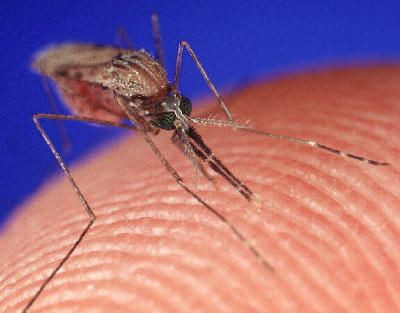Mosquito Bite Footage: Ever Wonder What It Looks Like When A Mosquito Bites Into Your Skin? [VIDEO]

Ever wonder what happens when a mosquito bites down on your skin? French scientists have captured unbelievable footage of a malaria-carrying mosquito extracting blood from an anesthetized mouse while under a microscope.
Researchers from the Pasteur Institute in Paris examined the phenomenon that is a mosquito bite for a better understanding of how a mosquito sucks blood from a host and for insight into malaria prevention, the Daily Mail reported.
According to the World Health Organization, around 3.3 billion people, or half of the world's population, are at risk of malaria. Fortunately, increased prevention and control efforts have led to a 25-percent global decrease in malaria mortality rates since 2000.
"Some people, especially in Africa and Asia, are bitten several times every day," lead researcher Valerie Choumet told National Geographic.
"So we wanted to know if mosquitoes behaved differently when they bit animals that were immunized against their saliva."
Although the mosquito's snout appears to be a single, narrow tube, it is actually comprised of a system of tools covered by the labium. Two mandibles and two maxillae are used to pierce the skin, grip the flesh of the host, and push even deeper.
The mosquito's tube-like snout is made up of the hypopharynx and the labrum, which run parallel to each other. While the hypopharynx sends saliva down, the labrum pumps blood back up.
One of the most shocking details that this video unveils is how the snout moves while inside of a host. Choumet and her colleagues noticed that the tip can bend at almost a 90-degree angle while searching for a blood vessel from which to draw blood.
When the mosquito finally does find a blood vessel, it was estimated to feed for around four minutes during which red blood cells shoot up its snout. In fact, mosquitoes sucked so hard that blood vessels ruptured, giving the insects the opportunity to go back into the blood that had pooled.
Upon further analysis, the team marked a change in mosquitoes carrying the malaria parasite known as Plasmodium. Malarial mosquitoes took a longer time searching for a viable blood vessel, which led the scientists to believe malaria was having an effect on the nervous system. Plasmodium was also found in mosquitoes' skin hours after the bite had occurred.
"I was genuinely amazed to see the footage," said James Logan from the London School of Hygiene and Tropical Medicine, who was not involved in the research but studies mosquitoes.
"I had read that the mouthparts were mobile within the skin, but actually seeing it in real time was superb. What you assume to be a rigid structure, because it has to get into the skin like a needle, is actually flexible and fully controllable. The wonders of the insect body never cease to amaze me!"
Source: Choumet A, Chartier K, Sautereau RV, Brey HB. Visualizing Non Infectious and Infectious Anopheles gambiae Blood Feedings in Naive and Saliva-Immunized Mice. PLoS ONE. 2012.
Published by Medicaldaily.com



























